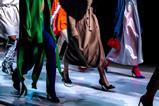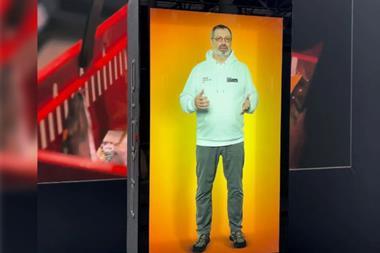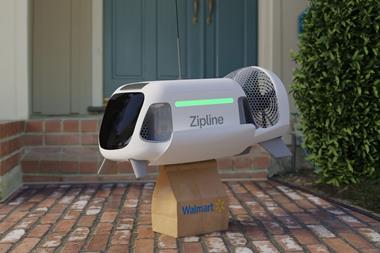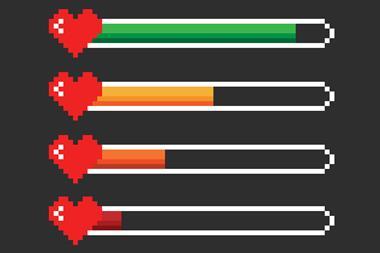PROMOTIONAL RESEARCH
Leaders and product bosses from New Look, The Very Group, Matalan, Bam, N Brown, Secret Sales, Fat Face and Seasalt reveal the products and trends they expect to be big news over the next three years

One mantra will always be true in fashion: product is king. Above all else, fashion retailers must understand which products consumers want to buy.
Only then can they layer on the right brand messaging, channels to communicate, technologies to support and supply chain to fulfil in order to complement that central offer.
So what will consumers want to buy three years from now in clothing, footwear and accessories?
In the latest analysis from Retail Week’s Fashion Forward: Forecasting the sector’s future design content campaign – which looks at how consumers will buy clothing across the next three years and is produced in partnership with Bloomreach – we find out by asking leading retailers.

Anica Wislawski, senior head of design, New Look
“We pride ourselves on predicting the trends, so in three years’ time we expect that interchangeability will be what it’s all about for the retail sector. The versatility of our clothes will become even more important and consumers will want multi-use, all-year-round pieces. The seasons are blurring and it’s hotter for longer, so shoppers will be looking for interchangeable wardrobes that can be heat-appropriate but also layer well for later in the year.
“Our mixed lifestyles of hybrid working will also play into changing demands for clothing – sports and athleisure pieces will become a fixed part of wardrobes and comfort will continue to be a deciding purchase factor for many; however, dressing up will always be important to customers. We are also becoming more conscious consumers, and vintage and recycled products are likely to be even more popular for Gen Z and younger generations.
“It’s exciting to think about how AI will impact the retail sector. Retailers will be able to use the technology to adapt their stores to know exactly what shoppers want before they’ve even stepped inside. We predict that the level of personalisation that retailers will be able to achieve for customers will change the sector forever.”

Robbie Feather, retail managing director, The Very Group
“Economic conditions are stretching household budgets and that won’t change soon. Consumers will make more considered purchases, driving demand for seasonless fashion. They’ll want timeless products to wear year-round and style in lots of different ways. Easy layering pieces like trench coats, bomber jackets, and lightweight jumpers will be key.
“With awareness of the environmental impact of our fashion choices on the rise, consumers will want to invest in products that last. Trends will evolve and be around for longer, like the recent revival of utility fashion. Demand for cargos shifted into tailored fabrics and wider legs worn with sweats and knitwear. We’ll see more subtle changes within larger trends.
“Consumer appetite for health and wellness is creating a gradual shift in how we dress day to day. Wellness apparel, like leggings, hoodies and joggers, combine comfort, functionality and style. They can be worn to exercise or dressed up for other activities. Brands in this space will thrive.
“Tech and sportswear will become interlinked. More of us want to elevate our workouts and smart sportswear is on the rise. Demand for garments with built-in chips or responsive tech fibres weaved into fabrics will become widespread. These products connect to your smartphone via Bluetooth, tracking performance.”

Ben Smith, chief trading officer, Matalan
“For us, the customer is king. Great product starts with a deep understanding of your customer – their life, their motivations, their aspirations. All of us who work in retail know that change is the one constant in our sector. But even across a three-year horizon, we can be fairly sure of some fundamentals that will remain. For me, the three biggies are value, service and trust.
“Value is about great-quality products at the right price. Versatility and longevity form a big part of value, which is why we think lifestyle ranges in particular will remain in high demand; they just suit our daily lives.
“In terms of service, it’s about providing customers with the ease of shopping whenever and wherever they want. Having great, visually inviting stores and great choice as well as a dynamic online experience will remain key for the coming years.
“And, last but not least, customers will want to know they are buying products or services from a brand that cares for its people and the communities it touches. This is something that will never change.”

Helen White, product and brand director, Bam Bamboo Clothing
“At Bam, we put reducing our impact on people, planet and nature at the forefront of everything we do. Three years from now, we’re expecting consumers to be much more aware of how much activewear has historically been made from fossil-fuel-based virgin polyester, rejecting it in favour of comfortable and high-performing workout gear made with innovative blends of nature-based fabrics, using exciting new materials such as Naia and Amni Soul Eco – two new fibres with great performance attributes as well as a lower environmental impact, which we’ve used recently in our unique Novea and Flexa ranges.
“We also expect to see the use of new recycled fabric blends, thanks to advances in recycling technology.
“As these new fabrics scale, they will be made available at more accessible price points. Comfort, performance and style will be paramount as more choice in activewear will mean consumer expectations continue to rise.
“Generally, we expect consumers will be demanding much more detail and transparency on where, how and from what their clothes were made, with EU legislation coming into practice also putting pressure on fashion brands. AI could also be a game changer for product traceability by 2026, which is currently opaque, slow and open to fraud.”

Sara Bradley, group buying director, N Brown
“Customers will have an expectation for quality pieces and will be looking for products that are made to last in order to maintain their value for resale – something that has grown in popularity and shows no sign of slowing down. Alongside quality as a measure of value, I think customers will be looking for versatility from the products that they choose to invest in, giving them the option of multiple ways to wear.
“I also think there will be a continuation in blurring of formal and casual product as lifestyles evolve. I think we’ll see a continued focus on growth in sports and athleisure on the back of a continued trend for wellness.
“Finally, as we’re seeing more extreme and unpredictable weather, customers will be expecting product to be relevant across seasons. This will also increase the need for practicality, with an increased demand for weatherproofing.”

Chris Griffin, chief executive, Secret Sales
“To predict what consumers will want to buy, we need to understand the factors that will influence future buyers. As interest rates have soared alongside the cost-of-living crisis and climate concerns have increased, consumers have naturally gravitated to affordability and sustainability. We believe these pillars will continue to be top priorities and will become entrenched in the consumer mindset.
“People will be looking for great value, good quality and sustainable choices. However, the economic crisis makes it difficult for them to afford full-price, high-quality products and we are seeing customers turn away from cheaply made, non-sustainable products. Off-price inventory addresses these challenges, allowing consumers to purchase quality items at better value for money, which can then be resold after multiple seasons of use, enabling consumers to buy into the circular fashion economy and be more sustainable while still buying quality products. And so, my prediction is that reseller and off-price platforms will see significant growth over the next three years.”

Kate Brown, product director, Fat Face
“At Fat Face, we use many factors to understand what is influencing consumer behaviour and impacting fashion trends. The way we live and work has changed dramatically over the past few years, and fashion has been agile and embraced these changes. At Fat Face, our goal is to create clothing in a responsible way that the whole family can live life in.
“We have seen demand grow for comfort and movement within the clothes we design, and we only expect this trend to build momentum over the years to come. Digital evolution, desk-based working and the blend of workspaces means we want our clothes to be adaptable and work hard for us. Categories such as fleece, jersey and knitwear will continue to grow as the end use is versatile, and customers can see great value in the cost per wear.
“The demand for more sustainable clothing will also continue to grow. Customers will buy less but buy better, choosing ‘buy for life’ designs that are timeless, built to last and created in a responsible way. Big trends at the moment include handcrafted designs, upcycling and repair, which are driven by customers seeking unique designs while extending the life of their most loved pieces.”

Laura Watson, chief creative officer, Seasalt
“We aim to make our collections as inspiring as possible as we recognise that our customers connect with colour, pattern and texture on a very emotional and individual level. They want to feel that spark of excitement that will make them feel great in what they’re wearing.
“Increasingly, customers will also want to make sure that they are shopping with brands who demonstrate they care about wider ESG issues and, more importantly, can evidence this. Brands that make vague claims about sustainability will fail.
“It is very important to us that we are making the best possible choices about the fibres and fabrics we use, and strive for those that are the most sustainably accredited. We work hard with our trusted supply base to deliver well-designed, high-quality products that are made to love and last.
“The trend for circularity will increase, so resale (we already have an excellent resale partnership with Reskinned) plus rental and repair will continue to grow. This is currently being led by both the cost-of-living crisis and the sustainability agenda. Repair is currently a key growth area, with consumers encouraged to keep items and ‘repurpose with a twist’ to give them new life. We have some exciting new projects under way that will enable greater usage of recycled fibres, as well as repurposing post-consumer textile waste.
“In three years’ time, more brands will adopt product passports, allowing more transparency around product sourcing. We are well on the way with mapping our supply chain through all tiers to support this.
“At Seasalt we are constantly applying the learnings from current trade to future seasons in order to make our products as relevant as possible. Climate change is having an impact, with weather patterns shifting, and therefore we need to be able to respond to this with flexibility in our greige fabric and yarn booking and with our manufacturers. I think clothing will become less seasonal and customers will be looking for all-year-round items, particularly in categories like our rainwear.”

Partner viewpoint
When making future prognostications for your brand, it’s always wise to use AI to help make the most accurate predictions. Generative AI can provide ecommerce fashion brands with the predictive analytics they need to stay ahead of the curve.
Ecommerce fashion brands all over the world are now relying on generative AI to analyse collected customer data and make future predictions about trends, customer preferences, or even sales volume. Generative AI models use data analysis and machine learning to make incredibly accurate predictions based on historical data.
AI takes a deep dive into past data — think customer behavior, sales trends, the success rate of past designs — to predict what’s likely to happen next. It’s like having a crystal ball — but one backed by hard data and smart algorithms.
One trend that we at Bloomreach agree is definitely going to gain additional traction is brands embracing sustainable commerce initiatives across the board. In the not-so-distant future, it will no longer just be enough for ecommerce companies to claim they are sustainable, they’ll need to be able to prove it to their customers.
This may lead brands to reconsider their strategies surrounding ecommerce returns. Returns can have a significant impact on the environment because of the product waste they generate.
Fashion brands with high return rates will need to create more sustainable strategies moving forward, such as using AI to segment heavy returners and changing marketing strategies for them. On top of the monetary benefit of lowering product return rates, this will also benefit the planet by reducing product waste.
Alice Chidgey, Customer Success Manager, Bloomreach Engagement UK
What does a successful fashion strategy look like?
The Fashion Forward: Forecasting the sector’s future design content series provides the answer. Previous content includes:
- The top 30 fashion retailers by 2026
- The top 10 retailers set to dominate fashion by 2026
- How the future consumer will shop
- Next season tech – the investments powering the future of fashion
Still to come:
- Date to be confirmed – Virtual panel discussion: Fashion Forward: Forecasting the sector’s future model































